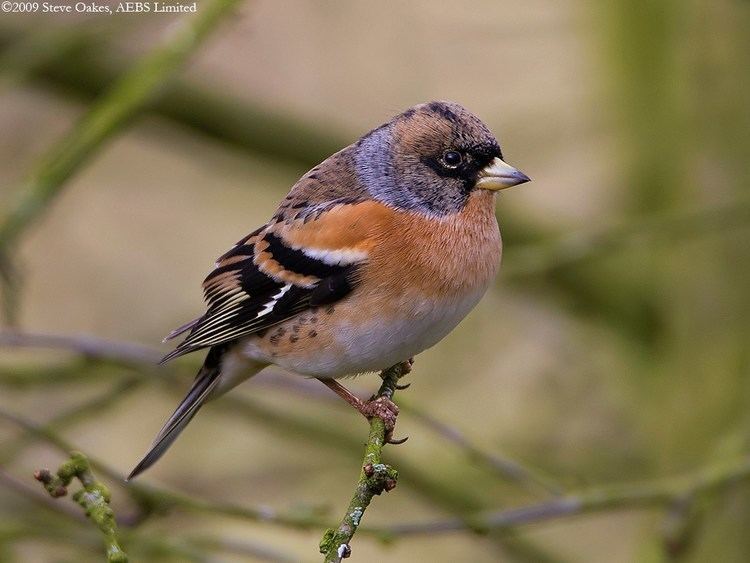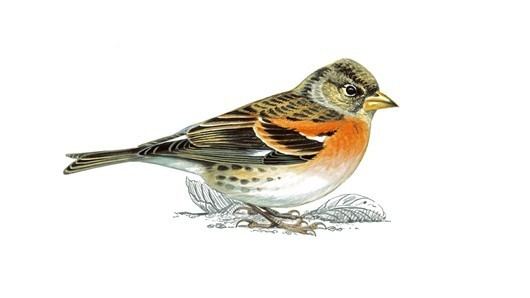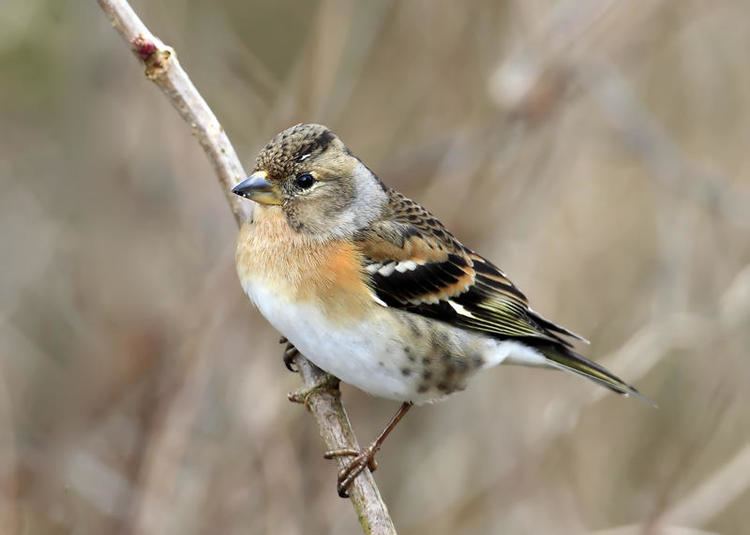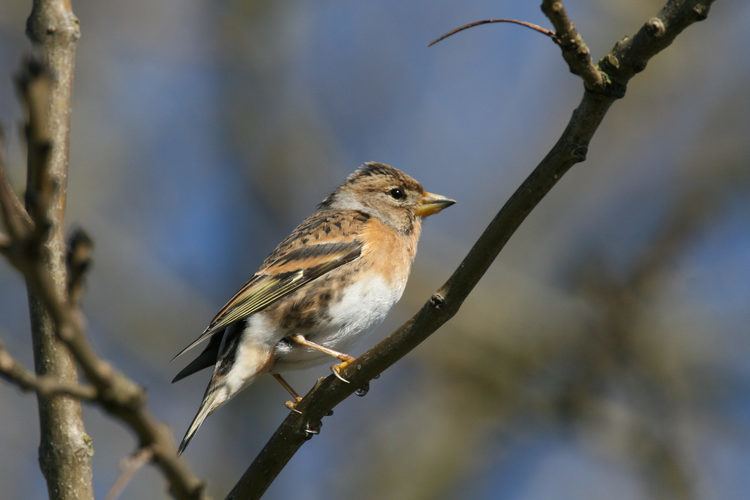Subfamily Fringillinae Higher classification Fringilla Order Passerine | Family Fringillidae Genus Fringilla Phylum Chordata Rank Species | |
 | ||
Similar Bird, Common chaffinch, European greenfinch, Eurasian siskin, Fringilla | ||
Guide to the id of british garden birds no 1 brambling
The brambling (Fringilla montifringilla) is a small passerine bird in the finch family Fringillidae. It has also been called the cock o' the north and the mountain finch.
Contents
- Guide to the id of british garden birds no 1 brambling
- Taxonomy
- Description
- Distribution and habitat
- Behaviour and ecology
- References

Taxonomy

In 1758 Linnaeus included the species in the 10th edition of his Systema Naturae under its current binomial name, Fringilla montifringilla. Montifringilla is from Latin mons, montis mountain and fringilla finch.

The common English name is probably derived from Common West Germanic *brâma, meaning bramble or a thorny bush. (Compare Standard German Brämling with the same meaning.)
Description

The brambling is similar in size and shape to a common chaffinch. Breeding-plumaged male bramblings are very distinctive, with a black head, dark upperparts, orange breast and white belly. Females and younger birds are less distinct, and more similar in appearance to some chaffinches. In all plumages, however, bramblings differs from chaffinches in a number of features:


An additional difference for all plumages except breeding-plumaged males is the bill colour - yellow in brambling, dull pinkish in chaffinch (breeding-plumaged male bramblings have black bills, chaffinches in the corresponding plumage have grey bills).
Distribution and habitat
This bird is widespread, in the breeding season, throughout the forests of northern Europe and Asia. It is migratory, wintering in southern Europe, north Africa, north India, northern Pakistan, China, and Japan. It regularly strays into Alaska during migration and may continue as far south as the western United States. The global population of bramblings consists in about 100 - 200 millions birds, with a decreasing trend.
Open coniferous or birch woodland is favoured for breeding.
Behaviour and ecology
This species is almost entirely migratory. In Europe, it forms large flocks in the winter, sometimes with thousands or even millions of birds in a single flock. Such large gatherings occur especially if beech mast is abundant. Bramblings do not require beech mast in the winter, but winter flocks of bramblings will move until they find it. This may be an adaptation to avoid competition with the Chaffinch. Bramblings mostly eat seeds, but unlike most finches, their young are fed largely on insects. It builds its nest in a tree fork, and decorates the exterior with moss or lichen to make it less conspicuous. It lays 4–9 eggs.
